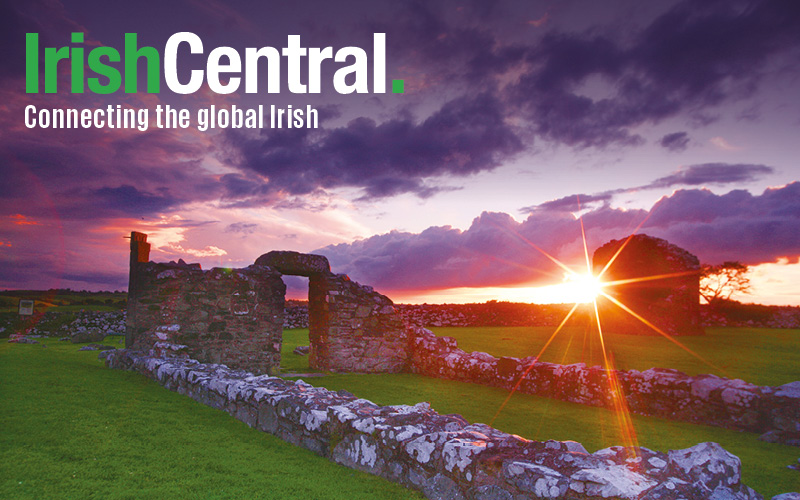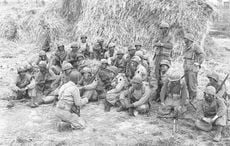You see them everywhere in Ireland. The ringed cross is as much an emblem of Irish identity as it is a religious symbol. Outside of Ireland people of Celtic heritage use the Celtic Cross in many forms to express faith and pride in their roots.
Stephen Walker has made a life's work of creating Celtic Crosses as jewelry. But his research and writing about the history and folklore of the Celtic Cross have found a much larger audience.
Walker has written for books, magazine and internet articles about Celtic art and presented scholarly papers at international Celtic art conferences in Ireland, the UK and even Australia. His real passion is making the subject understandable to ordinary people.
Walker is a Celtic artist and jeweler living and working in Andover, NY. One of his first attempts at drawing Celtic design was a ringed cross he made in 6th grade art class in 1969. Now, as the master jeweler at Walker Metalsmiths, he has crafted thousands of Celtic Crosses
Walker says, "A Celtic artist is not just expected to have mastery of this intricate art form. Certain knowledge of history and symbolism is demanded by the audience." At that point Sue, Steve's wife and business manager, will roll her eyes and say, "Don't get him started!"
"The intricate knots, spirals and mazes of Celtic ornament are as convoluted and complicated as the history and understanding of the Celtic Cross." People want short easy answers, but they also want them to be both authentic and to confirm what they already believe. I don't see it as my job to debunk folklore. Scholarly history and popular oral traditions don't always agree. "
As an ancient symbol, it is often assumed that the meaning and context must remain constant across the ages. But Walker is quick to point out that the expressions of the Celtic Cross have evolved from large public sculptures to the much smaller and personal tattoos and jewelry of today. In medieval churches and monasteries the Celtic Cross was a sign of Christian community. Now it is often a sign of ethnic identity as well. Some people also emphasize the pagan heritage that they believe is a part of its history.
"In 1996 I wrote an essay titled "Celtic Cross History and Symbolism", Walker explains, "At that time the general public was just beginning to use the Internet in a big way. The article went viral almost immediately. I like to imagine that it was so successful because it balances scholarly art history with folklore and faith."
Both the equal armed "Greek" cross and the "Roman" cross with the longer vertical shaft were widespread throughout the Christian world at about the time of Saint Patrick, 5th century AD. Cross monuments carved in stone begin to appear in Ireland soon afterwards.
Many of the most famous High Crosses survive in the form of large scale stone monuments.
By the 12th century it is believed that the style of the ringed cross had already become a reference to something respectably old and dignified. Crosses made in the later medieval period were deliberately archaic for the purpose of connecting their patrons to the distant past and impressing the audience with a sense of well established cultural heritage and lineage to days of saints and heroes.
From the 16th to the middle of the 19th century, the creation of new Celtic Crosses all but ceased, however many of the older ones survived, as they continue to survive to this day.
Because this style of cross along with the style of ornament we call Celtic art has for so long been seen as something very old, the similarity between the ringed cross and pre-Christian wheel and sun symbols has resulted in a folklore that sees the Celtic Cross as having pagan origins. Henry O'Neill, in his 1857 book Illustrations of the Most Interesting of the Sculptured Crosses of Ancient Ireland writes, "I think that ancient Irish art was pagan, and was continued during the Christian period, just as the peculiar form of the Irish cross is pagan, or as the names of the months, or of the days of the week are pagan; these, and a great deal more of paganism, having continued, owing to the tenacity with which a people retain their general habits and ideas."
Walker maintains that it was highly unlikely that the artists that created the medieval Celtic crosses thought of themselves as even remotely pagan. Many years later the notion of pagan roots for the Celtic Cross was, however, widespread among the "Young Ireland" political and cultural movement of the 1840s.
Walker explains, "O'Neill was not himself pagan, as much of his writing contains a Christian piety that would refute such a suggestion. Rather he is expressing pride in a noble antiquity for Irish art. During the 19th century Celtic Revival, much was said and written about native cultural survivals from pre-Christian times. "Pre-Christian" would also be pre-Norman and pre-English domination. It must be remembered that at this time Ireland was reinventing itself. The trauma of famine and foreign rule was fresh. Many ancient Gaelic myths and legends were revived to serve the cause of a renewed sense of national identity and pride in the past."
O’Neill was himself an important player in the nineteenth century Celtic Revival. An exhibition in Dublin in 1853 presented several casts of medieval High Crosses to the Irish public. Prior to this time the ringed cross had fallen out of use and was largely neglected. Fewer than 50 examples survived in Ireland, most of those in damaged condition. The exhibition and O’Neill’s publication several years afterwards were the beginnings of the present rediscovery of this exciting and mysterious symbol of Celtic heritage. By the 1870s the form of stone Celtic Crosses had been adapted to the media of jewelry. In the 20th century the ringed cross had become a popular symbol not only in Ireland, Scotland and the other Celtic nations, but had also been exported to the Celtic Diaspora throughout the world.
The question of meaning, especially of the circle, has been a focus of fascination or contemplation for many. Various explanations for the ring attribute "eternity" symbolism to the never-ending circle, or describe it as a form of halo. Some see an evolution from the "Chi Rho" monogram of Christ in a wreath as a prototype. The Egyptian Ankh hieroglyph for "life", which is a circle above a Tau cross, was adopted by early Christians in Alexandria as a symbol of eternal life. The Ankh on a small pedestal meant permanent or enduring life in Egyptian and is very similar to a Celtic cross. Perhaps the most widely repeated story about the cross and circle tells of Saint Patrick preaching to the heathen Irish and drawing a cross through a circle that was inscribed on a Druidic standing stone.
In the past twenty years tattoos have become increasingly popular. Walker says. "The media of ink on skin is a huge contrast from the large stone monuments of the past. Like jewelry, tattoos are a very personal expression of this symbol?"
Walker tells a story, "At a festival I commented on a young woman's Celtic tattoo, which I recognized as a detail from the Aberlemno Stone, a Scottish Celtic Cross. She asked with a tone of disappointment if that was a Christian cross? I told her yes it was, but the spiral designs had a much older pre-Christian heritage in Celtic art. She seemed to like that answer. The substance of religion is faith and love, not symbols. But like the legend of St. Patrick and the cross, symbols can still be useful to lead and instruct in the Christian faith."
The Celtic Cross is often seen as an object from the distant past, which it certainly is. Walker designs and crafts his own Celtic Crosses as an ancient symbol, legitimately inherited through the stewardship of more recent generations. The Celtic Cross is being continuously explored and creatively fashioned for the faithful of the present and the future.




Comments